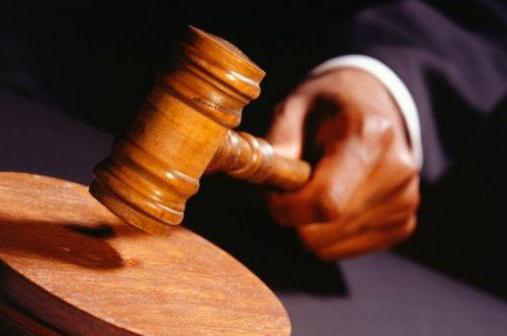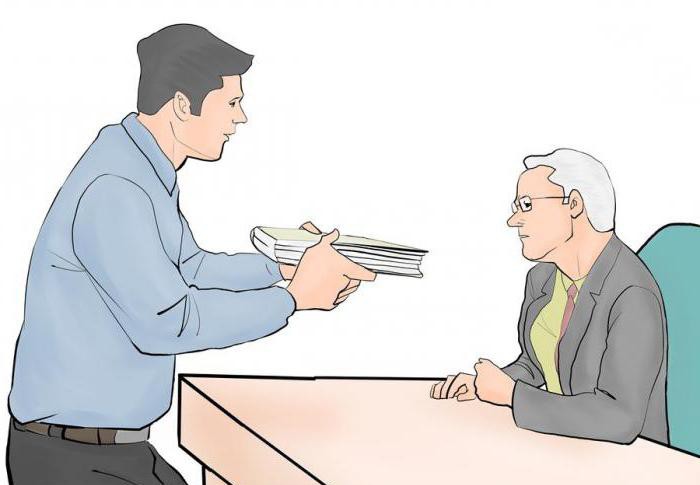Litigation is a complex and complicated process. During the trial, cases often arise when it is necessary to add witnesses, make adjustments to the course of the case or add clarity to it. Often controversial issues are encountered in proceedings related to loans and debts by legal entities.
What it is
The legal succession in the arbitration process is a process that results in the replacement of a person who is a third-party party or person (legal successor), selected by another person (called the legal successor) due to the fact that one of the parties involved leaves the process. This happens in a disputed relationship or in a relationship established by court order. The procedure assumes that the succession will be tangible (in the case when the succession was universal) or in the case of the transfer of a separate right.
The procedure is always general. This means that the assignee takes part in the whole process, which is adopted from the predecessor. Exceptions are those cases when material continuity is considered unacceptable. Such requirements are connected with the personality of the plaintiff or the defendant - this is the collection of alimony, divorce. Change is also excluded if it is contrary to the contract or the law.
Succession in civil matters
Often there is a procedural succession in the civil process. Judicial practice in such cases is carried out in accordance with the Code of Civil Procedure of the Russian Federation.
This occurs in several cases. Most often, it happens that one of the parties leaves the process by court order or in a controversial case. Such situations include the reorganization of the legal entity participating in the process, the death that occurred, debt transfer, assignment of claims
Implementation of the procedure is possible at any stage of a civil court.
If the assignee is appointed, all measures that apply to the predecessor apply to him.
A decision on the appointment of a successor may be appealed in private.
Succession in Arbitration
The legal succession in the arbitration process is carried out in a situation when one participating party leaves in a controversial case or in a legal relationship established by a judicial decision of the arbitration court. This situation occurs in the case of the death of a citizen, the reorganization of a legal entity, the transfer of debt, and concessions according to requirements. In these cases, the court commits the replacement of the defendant and necessarily indicates this procedure in a judicial act.

In the event that a party has been replaced or the court has refused to carry out such a procedure, this should be indicated in the judicial act. This act may be filed for appeal in accordance with Federal Law No. 205-F3.
For the one who acts as the legal successor, all actions that were applied in the arbitration process until the legal successor entered the procedure are applicable and relevant. They are obligatory in the form and to the extent that they were obligatory for the one whom the successor replaced.
Non-Successive Cases
There are a number of cases in which procedural succession is not considered in the arbitration process. For example, after the death of the person in charge, it is possible to initiate a new case to achieve the desired legal result.
In the case when a lawsuit has been filed to establish paternity and the defendant has died, the mother may file a lawsuit in court, as a result of which the fact of paternity is established. According to the lawsuit "On the protection of honor" after the death of the defendant in accordance with Art. 152 CC allowed the protection of the dignity and honor of a citizen even after his death.
In these examples, there is no procedural succession, however, the legal result in court has been achieved.
Procedural complicity
Procedural complicity and succession in the arbitration process are not identical concepts.
The procedure, during which several defendants or plaintiffs participate in the process, while their duties or requirements are not mutually exclusive, is called procedural complicity.
In accordance with Art. 40 of the Code of Civil Procedure, a lawsuit can be brought by several plaintiffs at once, as well as many defendants at the same time. Moreover, each respondent or plaintiff acts independently in relation to the other side of the process.

There are cases in the judicial history when the defendants did not recognize the claim in their direction, and they filed a counter to protect their own interests.
Sign of complicity
A procedure that can be complicated by numerous plaintiffs or participants in a civil process is procedural complicity. Procedural succession in this situation may not apply.
A very important feature that distinguishes procedural complicity is the possibility that substantive requirements or obligations coexist with each other among several plaintiffs or defendants.
This is precisely the characteristic difference between accomplices and third parties. Third parties, moreover, independently declare claims regarding the subject of the dispute. Participation can appear both at the initiative of the parties, and at the initiative of the court.
Arbitration
The legal succession in the arbitration process requires the preliminary expenditure of forces and energy from the manager. The time interval allotted for the arbitration manager is very small. During this time, he needs to understand the transactions of the debtor and the bankruptcy procedure. Even a carefully and scrupulously conducted procedure, as a result of which a legal entity is declared bankrupt, rarely does without appeals to the arbitration court.
Accession Court Initiative
Procedural complicity and succession in the arbitration process are divorced in different directions, although they have similar motives. Partners can perform any actions of a procedural nature, they are independent, have additional rights, except for procedural ones.

Within the framework of the law, they can entrust one of the accomplices to conduct business, as well as join the appeal of cassation nature, which one of them submits.
If the case without an accomplice cannot be considered, then the court attracts them on its own initiative. After the involvement, preparation of the case, documents, consideration of all points, begins again.
Succession Procedure
The legal succession determines the procedure for the successor to enter the process, the responsibilities and obligations that arise.
Article No. 48 of the APC of the Russian Federation establishes a circle of persons in respect of whom procedural succession is permitted. Such persons may be parties to a controversial legal relationship, as well as such, which is established in court. In the arbitration process, the parties involved are the defendant, the plaintiff, and third parties who make claims independently on the subject of the dispute. They enjoy certain rights, and also fulfill the duties assigned to the plaintiff. An exception is the obligation to comply with a claim or other dispute settlement procedure before the court.
Once the successor has entered the process, the proceedings will continue. The court may provide time for preparation. But it should be noted that all previous measures will continue to spread.

For example, the defendant stated that the plaintiff missed the statute of limitations for the court. In such a situation, the successor should not make a second appeal about the passage of time. The statement made by the defendant will continue to apply.
Material succession
Replacement of the side during the process is possible. Procedural succession in substantive law is carried out by supervision by assigns. They will observe from the outside at all stages of the arbitration action. This does not depend on the fact that a judicial act issued as a result may affect their duties or rights regarding one of the parties to the dispute.
If it is impossible to make legal succession in arbitration in relation to a third party without independent claims and requirements in relation to the subject of the dispute, then such a person shall be deprived of the right to appeal both the court decision that has entered and has not received force.
The implementation of the procedure at different stages
The definition of procedural succession in the arbitration process establishes that the rights of the parties at different stages and stages of the proceedings are different. This significantly affects the differences in the possibilities of the parties in paperwork.
Replacing a retired party with a successor in the arbitration process is possible only when the succession occurs financially in the civil process.

Before the court decision becomes legal, the parties to the case are in legal uncertainty with respect to the disputed subject. At this stage, succession may arise in any way with any of the parties. But after the decision has entered into force, the situation changes. Now the disputed legal relationship is specifically defined, the parties can use only those rights that the court recognized for them.
Cases of application of the measure
The procedural succession of the defendant in the arbitration process may occur in several cases. Among them is the reorganization of a legal entity. This situation is most common. Then the side is replaced in the process. Procedural succession is applicable in this situation.
The reorganization of the company is carried out in the form of accession, merger, division, transformation and spin-off. After the merger, the obligations and rights are transferred to the resulting legal entity. The transfer act regulates this procedure.
As a result of joining the person to whom they joined, the duties and rights of the person who joined are transferred. The transfer act regulates the procedure.
In the event of a separation, the rights, as well as the obligations of the person shall be transferred to new persons formed as a result of the separation. This happens in an appropriately dividing balance.

If several or one person stands out from the composition, then both the rights and obligations that were assigned to the whole legal entity pass to each.
After the transformation, otherwise - changes in the legal form, both the rights and obligations of the reorganized company pass to the newly formed person. This is regulated by a deed of transfer.
Legal succession in a civil proceeding should be distinguished from succession in substantive law. In a civil court, the entire set scope of both rights and procedural obligations passes from person to person. Partial succession cannot be in principle. All rights and obligations pass to the person who replaced the defendant or the plaintiff. For example, a transfer of debt passes entirely to the assignee.
When a civil procedure is allowed
Procedural complicity and succession in the civil process are not always allowed.The presence or absence of the procedure depends on whether it is allowed. There are such rights and obligations, the nature of which relates to personal trust. Such duties cannot be transferred to another person. Also, in accordance with article No. 388 of the Civil Code of the Russian Federation, a concession is not possible to change the creditor, where the identity of the creditor itself is important for the debtor. Cases related to the dismissal of an employee or his reinstatement are also not subject to the succession procedure.
Another case that cannot be transmitted is related to dependency. Stops with the death of the one who receives the rent. Since the situation is personal in nature, the obligation cannot extend to the heir of the annuity recipient.
Petition
A request for procedural succession in the arbitration process shall be submitted to the court, which will consider the case. You can file such an application at any time after the initiation of proceedings. Prior to this, the person who will be the assignee could participate in the process as responsible, having interest or responsible.
There are cases when continuity occurs after a court decision is made, already in the course of its execution. In this case, the petition is also filed with the court. The decision issued by the court will serve as the basis for the replacement of the defendant in the enforcement proceedings. In this case, a new decision is not made, the successor simply takes the place of the retiring person.
An application for procedural succession in the arbitration process shall be submitted in the form of an application in the established manner. The application is registered, and then launched into the case.
If desired, the defendant or plaintiff may be changed. For this, a request for procedural succession in the arbitration process is filed. A statement of succession is considered at a court hearing. The court is obliged to notify all the persons involved in the case about when and what time the consideration of the issue will be held, as well as where the meeting will be held.
During the meeting, the court considers the application. At this time, the possibility of succession is checked whether the given event really happened and whether a specific person can be the successor.
Based on the results of consideration by the court, a decision is made in which succession is established or refusal is indicated. A private complaint may appeal against any court decision on this matter.

In the event that a decision violates the legal rights of successors and predecessors, it may be appealed.
Application form
An application for legal succession in the arbitration process shall be submitted in writing. It must indicate the number of the claim in a civil case, full name or name of the plaintiff himself, and full name or name of the defendant. The essence of the claim is indicated.
A written succession in the arbitration process is executed in writing. The sample should contain the required items.
It is mandatory to write on what basis they ask to carry out the procedure for appointing the assignee.
In a statement, it looks like this:
As a result of the preparation of the case for consideration, it was found out that the defendant (plaintiff) died (the company was reorganized), his successor is ... (full name of those people who are them, as well as their address).
I ask on the basis of Art. 44 Code of Civil Procedure of Russia to replace the plaintiff (defendant) of such-and-such with such (full name of the plaintiff or defendant is indicated in full) by his assignee (full name or name and address are also indicated).
At the bottom of the statement is the date and signature.
An application for procedural succession in the arbitration process shall be considered immediately upon receipt, at the next court session. However, the decision is made only after all the documents are collected.
Decision Terms
Replacement by the plaintiff occurs only if the plaintiff agrees to this, and the assignee is not against entering the process. If there is no consent of the successor, the proceedings are terminated.
Replacement by the defendant occurs regardless of whether there is agreement or not. The basis is a court decision.
The replacement of the legal successor by the defendant occurs regardless of his consent, based on the court ruling.
Unlike a change in the wrong side, succession does not start a new process. The proceedings continue from the moment the case was suspended.
At any stage, a legal succession in the civil process is possible. The concept of succession may occur with respect to several people. In this case, the court all of them are notified of entry into the process. However, to agree with the decision or not is the will of everyone. Entering a case, a person must understand that he is not able to change the events that took place before his entry.
In the event that a replacement occurs after the court decision has entered into legal force, the successor may require execution. Or demand to do such acts that the assignee did.
Singular Succession
There is such a thing as a singular (single) succession. This is the case when the concept of a relatively separate material legal relationship is applied. It entails the application of the procedure in the case when the transfer of subjective rights on a legal basis is allowed. Such a procedure is feasible in case of assignment of a claim, transfer of ownership, transfer of debt.
The rights of creditors under obligations are transferred to another person. The reason for this is to become 387 of the Civil Code of the Russian Federation. And the rights and obligations that the testator has are also transferred by succession.
findings
As a result, we can conclude:
- the change of the creditor should be carried out in several stages - first, the court replaces it with the court that established the amount of claims, then the arbitration court, which included the predecessor creditor in the register;
- there can be three initiators in arbitration cases - a court, legal successor and legal successor;
- the duty of the arbitral tribunal is the application of the rules in the legal succession;
- court decisions on procedures may be appealed;
- if the name of the legal entity that participates in the case changes, the court may decide to change the name or clarify.